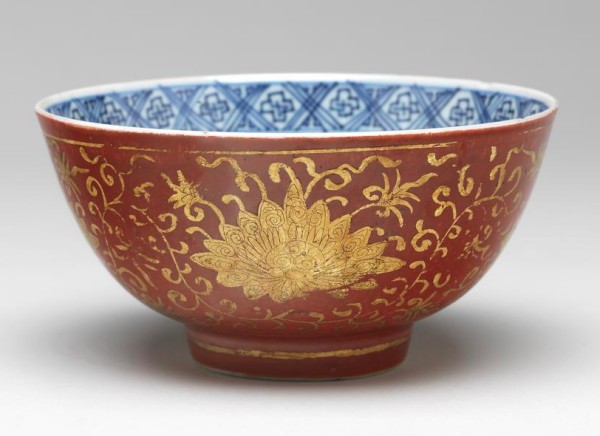
Typical Chinese "kinrande" (gold brocade) decoration with (worn) gilt on a red ground on porcelain with underglaze blue decoration.
Photo curtesy Fitzwilliam Museum, Cambridge, 2025.
Kinrande means gold brocade in Japanese, and is a Japanese name of a Chinese decoration.
Japanese name for Chinese porcelain wares with their outside covered with a finely drawn gold decoration on a red ground. This ware was produced in the mid 16th century primarily for the Japanese market.
The same term is sometimes used for Japanese porcelain with similar decoration, then sometimes specified as Kinrande Imari. Eventually this decoration developed into akae (enamel decoration where red dominates) or iroe enamel decorated porcelain with gilt and other enamels colors, all mostly made for export.
As a side issue, the terms used to describe Japanese porcelain decoration are often confusing and can equally likely refer to center of production (Arita - a town located in Nishimatsuura District, Saga Prefecture), western market export harbor (Imari - a city in Saga Prefecture), general origin (Satsuma - feudal domain (han) that was ruled by the Shimazu family from the end of the 12th century to the Meiji Restoration in 1868), origin (Seto - a city located in Aichi Prefecture known for its ceramics since at least the Kamakura period in the 12th century) or type of decoration (Sometsuke - meaning blue and white), name of original or later masters (kakiemon - the family, whose kilns were the main producers of it), studio, factory or workshop.
A